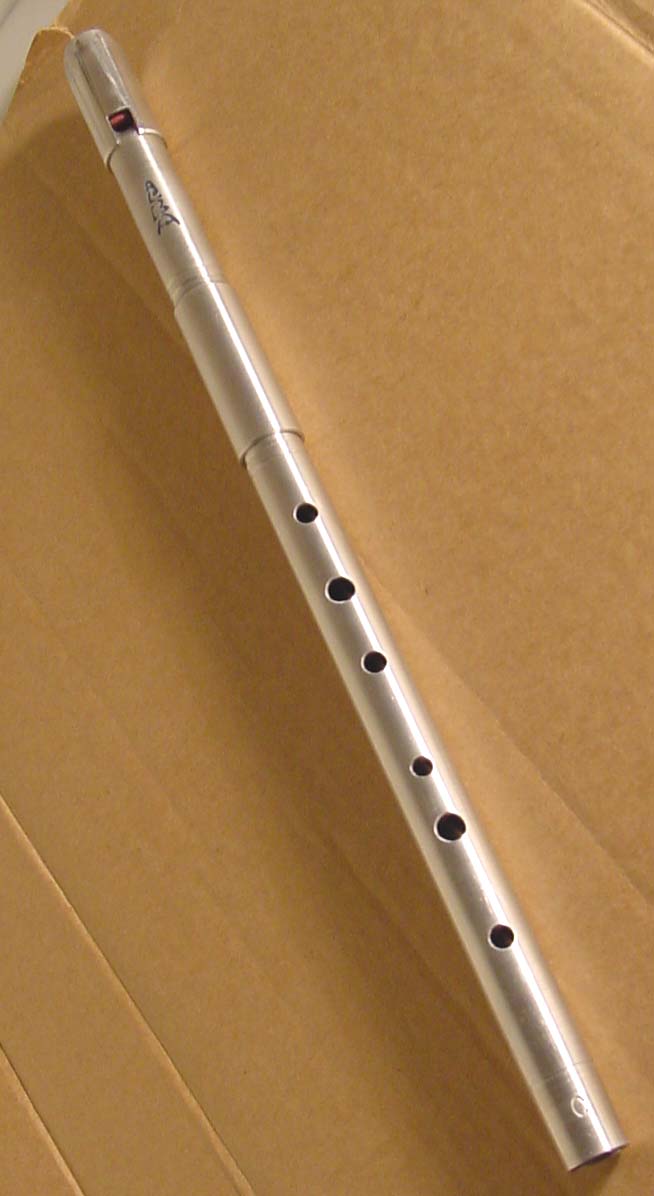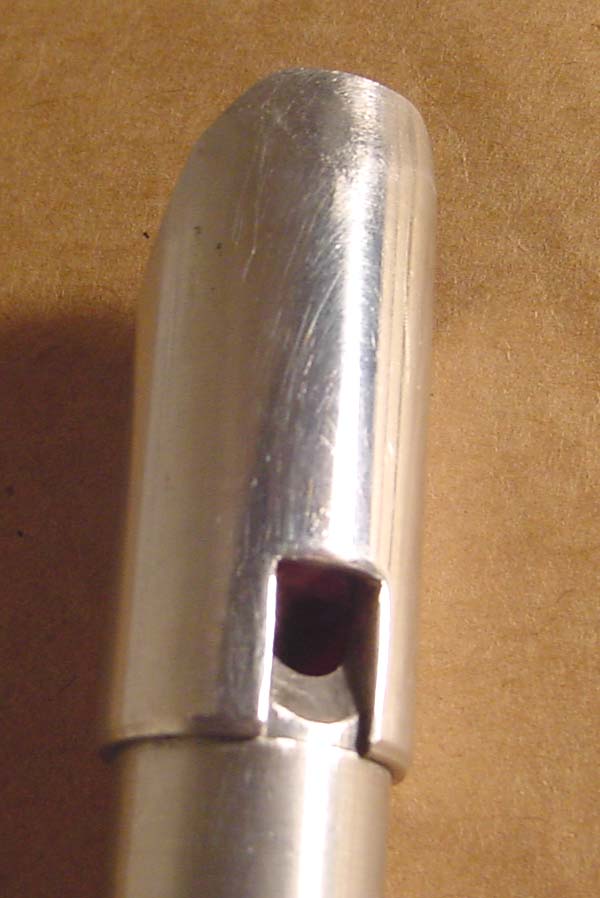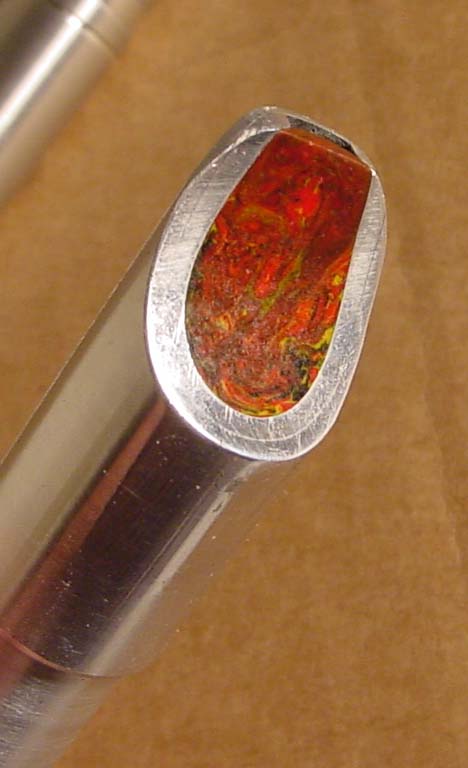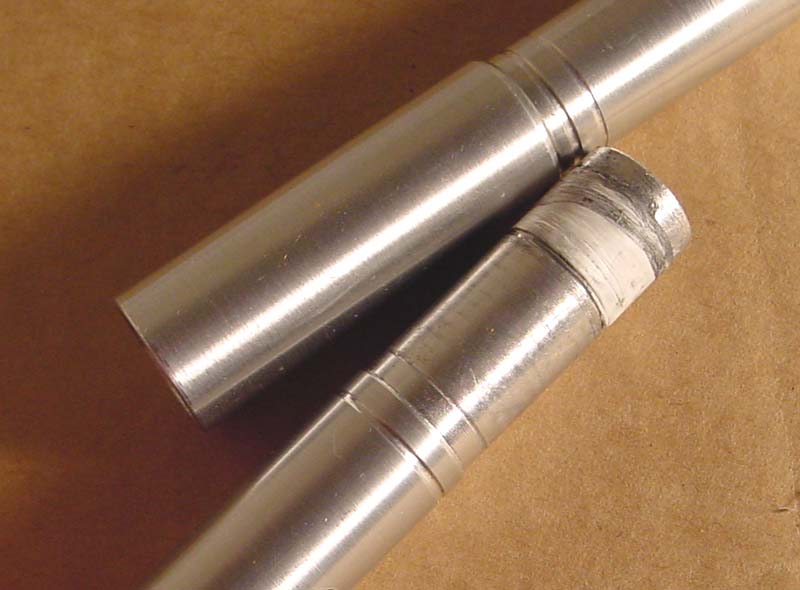Alba Soprano C whistle Review
(Review written September 2005)
- Preface
- I recently got my hands on a couple of Alba whistles, a non-tunable soprano D, which I reviewed last month, and a tunable soprano C. This review will have a lot of the same text as the D review since many of the appearance and design characteristics are the same for both whistles. But there are very important playing differences, so read on!
- At a Glance
- Whistle Reviewed
- Alba Soprano C whistle
- Models Available
- Alba Aerophonics makes tunable and non-tunable aluminum whistles, flutes, and flageolets in a variety of keys. They also make D and Bb whistles from tufnol.
- How Acquired
- Received on loan.
- Construction
- Aluminum with resin fipple plug and teflon tape tuning slide.
- Price at Time of Review (in US Dollars unless otherwise noted)
- £65.00 (close to $120 USD)
- Available From
-
Stacey O'Gorman (Alba Aerophonics)
Big Whistle Music Shop carries a small range of Alba whistles.
- Appearance
- Like the Alba soprano D, the whistle has a brushed/lathed appearance. It also has fipple art which looks a lot like the fipple art on the D whistle. They were made about a year apart, so I think you can get a good idea of what the standard fipple art looks like from these two whistles.
-

Here's the full whistle. They kind of wash out in the picture, b
Here's a close-up of the mouthpiece. Here you can see the half-moon labium ramp characteristic of many of the Alba whistles. A few whistles can be found which use this type of blade: The Serpent SweetPolly, the Kerry Songbird low D, the old McHaffie whistles, and of course quenas have had blades similar to this for ages. There's really not much difference to see here between the D and C whistles. What you can't see is that the fipple plug "wings" on the C whistle are a little less restrictive. On the D whistle, the "wings" narrowed the windway to the approximate width of the labium ramp. On the C whistle, the cavity is a bit wider.
Here's another angle on the mouthpiece, showing the fipple area. The angle forming the "beak" is slightly different, but close enough that the difference could just be individual variation. The fipple is made of a resin that Stacey calls "Albanite". This swirly "fipple art" is the standard type (as well as a sparkly kind as well). Stacey also makes inlays of Celtic and Pictish art for her stand at the Celtic Connection in Glasgow, and sometimes for special order, though I didn't have an example of that to take a picture of.
Here's the tuning slide, taken apart. You can see the decorative grooves that I was talking about in the first picture. Like the Alba SE, the tuning slide's inner workings are made of teflon tape. It works a little better on this whistle, having a less-grinding feel when I move the slide around. While I'm leery of the idea of teflon tape as a construction medium, I have to admit that I've never experienced any problems with it on Stacey's whistles, and I expect you probably wouldn't either.
A shot at the end of the whistle, showing the last three holes. Like the D whistle, the holes on this one are also placed similarly to an Overton-style in terms of grouping, and the bell note (C) being placed away from the pack. Unlike the Alba soprano D I reviewed, the holes are aligned nicely and much more smoothly made. It's always a good thing to see a maker making incremental improvements. They key signature here is discreetly stamped, as on the D I reviewed.
- Playing Characteristics
- Much less brash than the D whistle, with a nicely rich character without a lot of hissing. Both octaves are a lot closer to each other in terms of volume, air required, and playing characteristics. The whistle is mellow, with a touch of brightness in the second octave.
-
Sound clips of the whistle:
Mist Covered MountainVolume: Like the Alba soprano D, the second octave is quite a bit louder than the first. Unlike the D, it doesn't sound harsh or brash, so it doesn't come across as jarring as it could. The first octave is close to the same volume as my Clarke Sweetones. The second octave is much louder.
Responsiveness: Plenty responsive. I used this whistle to learn a couple of new reels, like Mason's Apron, and didn't struggle with the responsiveness at all. This kind of issue really shows it's head for me when learning a new tune, so I think it's safe to say that this whistle is good to go in that regard.
Tuning: Since this is a tunable whistle, I didn't have to work so hard at keeping as warm as I did the Alba soprano D. I just set it a little sharper and was able to go with much less care in that regard. There aren't any real hoops to jump through on the tuning on this whistle except on B (C# equivalent on a D whistle). That note requires quite a bit of push to put it in tune, much like on the Alba Soprano D. But all other notes have marked improvement in the breath required for tuning being in line with each note's neighbors.
B-flat (a C whistle's equivalent to C-natural): Easily played in tune with the standard OXXOOO. OXOOOO is about 25 cents sharp, and OXXOXX is about 55 cents flat.
Hole size and placement: The holes on this whistle are nicely finished, and centered along the barrel. They look a lot cleaner than on the Alba D I recently reviewed.
Air volume requirements: A little above average. I rate this similarly to the old-style Clarke C I pitted it against.
Air pressure requirements: While the second octave does take a bit more push than the first octave, it's not anything like the Alba Soprano D. The breath pressure requirements are much closer between the octaves, which is nice. But it does mean you can't really lean into it and wail like on the D Stacey makes.
Clogging: I haven't really experienced any clogging to speak of with this instrument, which is rare in an aluminum whistle. I don't think it would need the Duponol treatment at all. I can't say if this is a lucky happenstance with this whistle, as the other Albas I have reviewed have been fairly typical.
Wind Resistance: Fairly wind resistant. I played it outside a number of times without running into any issues at all.
- Summary
- This is a much better behaved instrument than the Alba soprano D that I reviewed. It has playing characteristics much more similar to the Alba low D that I had in my possession several years ago. It could be that Albas really mellow out a bit in the lower keys, since they seem to have similar characteristics. The soprano D's I've all tried also all seem to be similar, but so very different from the lower keys in terms of breath, and the tonal qualities they produce. Though it has slightly higher breath requirements, a beginner would probably like this whistle; t's not too hard to hit the second octave, and it doesn't tend to shriek and sound scary up there, and it's otherwise pretty easy to play in tune.